
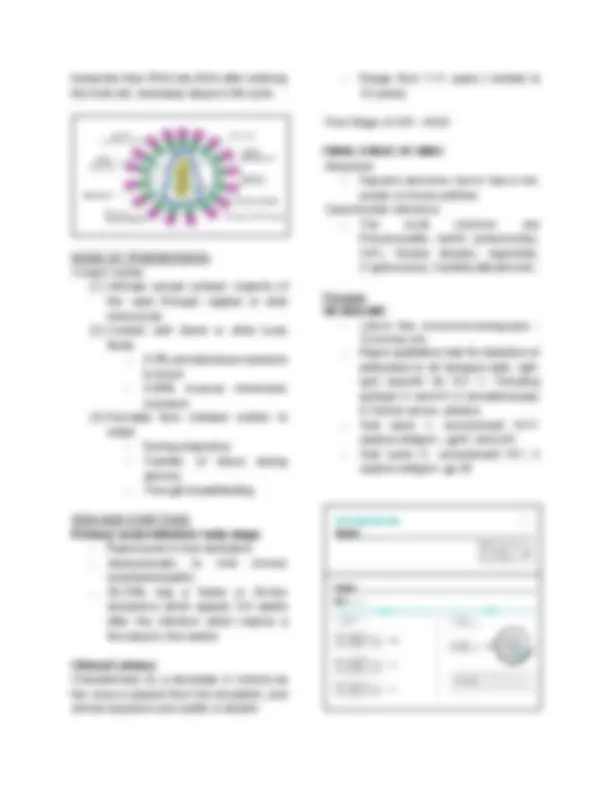
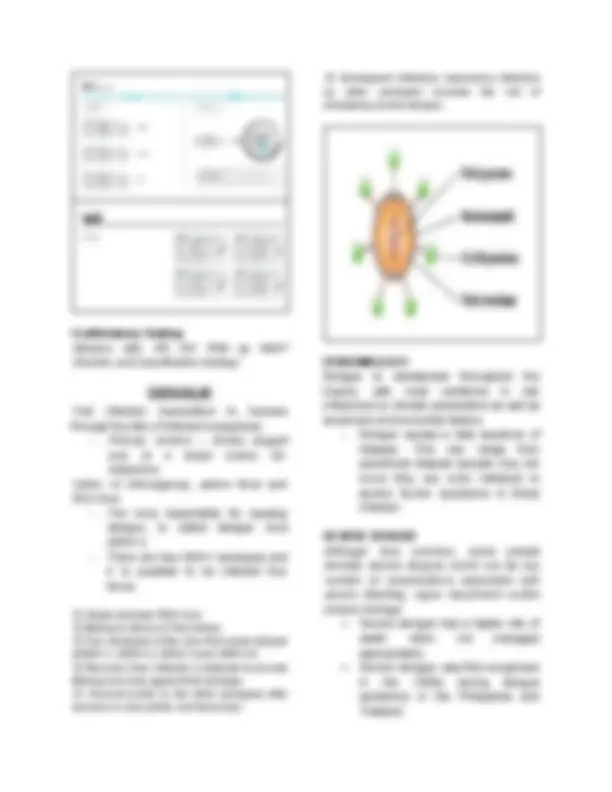
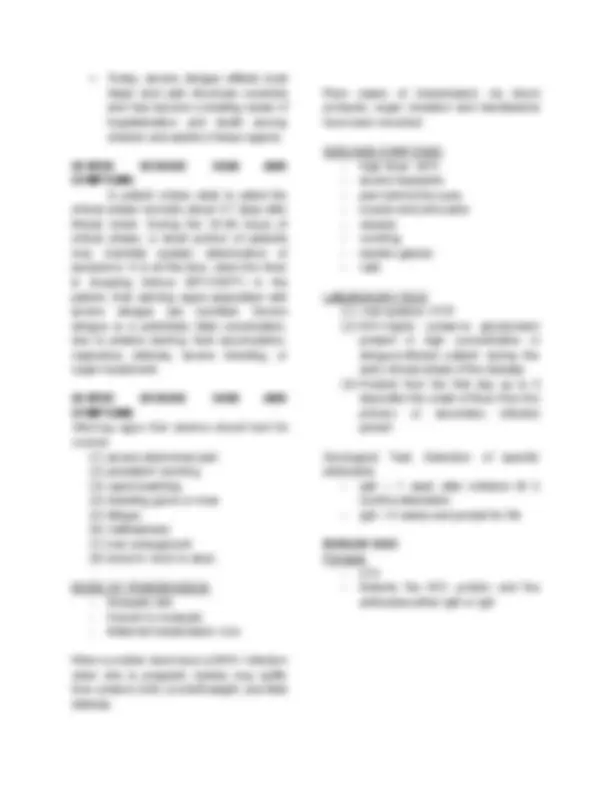
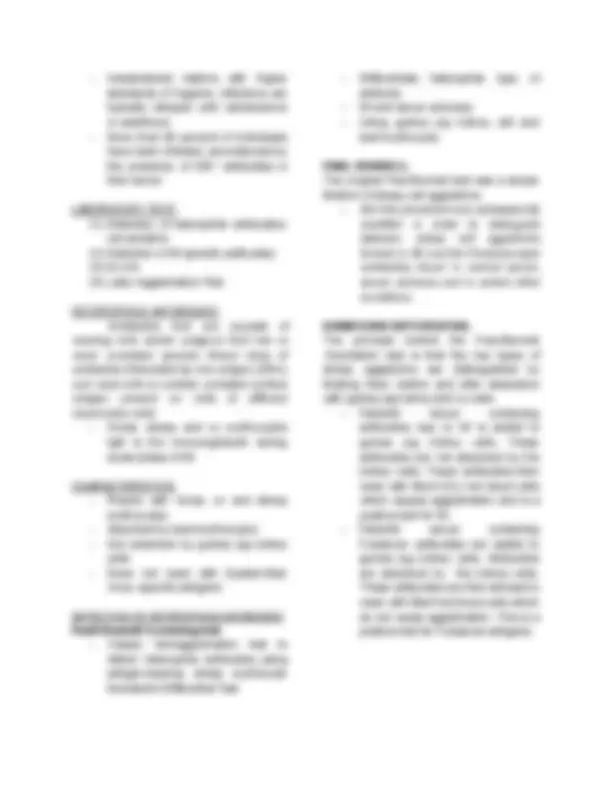
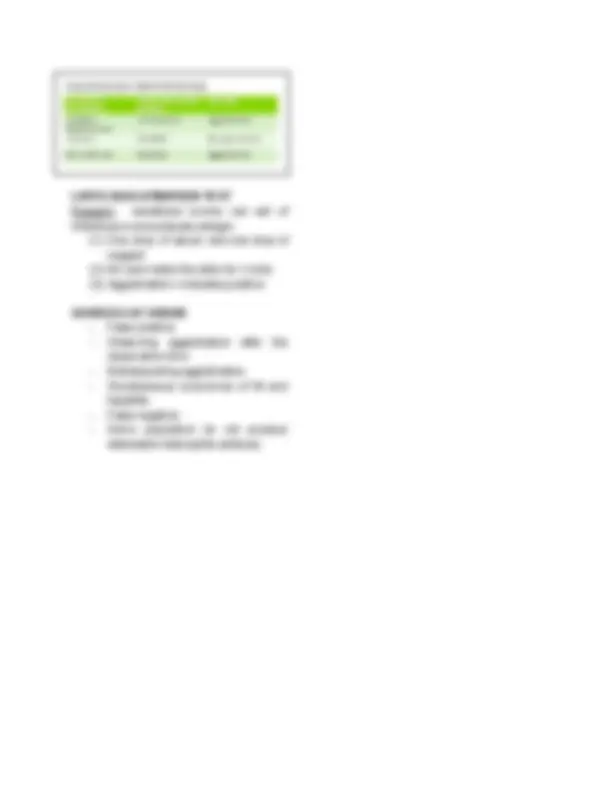


Study with the several resources on Docsity

Earn points by helping other students or get them with a premium plan


Prepare for your exams
Study with the several resources on Docsity

Earn points to download
Earn points by helping other students or get them with a premium plan
Community
Ask the community for help and clear up your study doubts
Discover the best universities in your country according to Docsity users
Free resources
Download our free guides on studying techniques, anxiety management strategies, and thesis advice from Docsity tutors
Information on three infectious diseases: Hepatitis, Dengue, and Malaria. It describes the causes, symptoms, and laboratory tests for each disease. Hepatitis is caused by viruses and noninfectious agents, and the most common type is Hepatitis B. Dengue is a viral disease transmitted by mosquitoes, and severe dengue can be fatal. Malaria is caused by Plasmodium parasites and is spread through mosquito bites. The document also provides information on laboratory tests for each disease, including serological tests and rapid diagnostic tests.
Typology: Study notes
1 / 9

This page cannot be seen from the preview
Don't miss anything!






Inflammation of the liver caused by viruses and by noninfectious agents such as ionizing radiation, chemicals and autoimmune process Viral hepatitis is the most common liver disease world wide ◼ 2 major groups (1) Primary hepatitis viruses: A,B, C, D, E and GB virus C- 95% cases of hepatitis (2) Secondary hepatitis viruses: Epstein-Barr virus(EBV), Cytomegalovirus, Herpes virus - involve the liver secondarily to infection Hepatitis B Hepatitis B virus is a complex DNA virus from the family of Hepadnaviridae. ◼ Long incubation hepatitis ◼ Major cause of morbidity and mortality throughout the world ◼ Highly endemic in the Far East, parts of the Middle East, sub-Saharan Africa, and the Amazon areas. Mode of transmission ◦Parenteral by intimate contact with HBV contaminated blood, semen, vaginal fluid ◦Mother-fetus transmission Laboratory Assay ◼ Hepatitis B surface Antigen (HBsAg)- general marker of infection. ◼ Hepatitis B e Antigen (HBeAg)- active replication of virus, infectious ◼ Hepatitis B core antibody, total or IgM (anti-HBc)- marker of acute infection ◼ Hepatitis B core antibody, IgG- past infection or chronic infection ◼ Hepatitis B e antibody (anti-HBe)- virus not replicating but still positive for HBsAg ◼ Hepatitis B surface antibody (anti-HBs)- document recovery/ immunity to HBV ◼ Hepatitis B viral DNA by PCR HBsAg- Hepatitis B surface antigen General marker of infection of Hepatitis B.
Principle Lateral flow immunochromatographic assay- screening only - HBsAg conjugate + serum
Human Immunodeficiency Virus (HIV)
- etiologic agent of AIDS HIV-1 - Epidemic HIV-2 - West Africa HIV member of the family Retroviridae, a type D retrovirus belongs to the lentivirus subfamily. Included are oncoviruses HTLV- I and HTLV-2, which induce proliferation of infected cells and formation of tumors. Retrovirus is an RNA virus with a unique enzyme reverse transcriptase that can
Confirmatory Testing Western blot, IFA HIV RNA by NAAT (Nucleic acid amplification testing)
Viral infection transmitted to humans through the bite of infected mosquitoes.
- Primary vectors - Aedes aegypti and, to a lesser extent, Ae. albopictus. Vector of chikungunya, yellow fever and Zika virus
❑Microscopy- blood film ❑Serological test ❑LFA ❑Pf/Pan Antigen Test ❑Rapid self-performing qualitative, two site sandwich immunoassay ❑Utilizes whole blood for the detection of P.falciparum specific histidine rich protein 2 (Pf HRP-2) and pan specific pLDH ❑Differentiation of P.falciparum and other malarial species ❑Follow-up of anti-malarial therapy PRINCIPLE ❑Test Line Pan - for P. falciparum, P. vivax, P. malariae, and P. ovale ❑Test line Pf - for P. falciparum
Primary infection caused by EBV in adolescents and adults. If in infants, asymptomatic or mild. Incubation period is 10 to 50 days. Sign and symptoms Classic symptoms: are fever, lymphadenopathy and sore throat